When we planned our visit to Fort Scott, Kansas our itinerary included a variety of sites to see. The one site that had to be top of our list is the actual fort from where the city gets its name. One of a chain of forts built in the mid-1800’s, it was designed for keeping the peace frontier style. With many tribes being resettled to the west, it was imperative that these new “promised” lands be kept free of settlers. Today, this free site has been renamed the Fort Scott National Historic Site and offers an educational opportunity for visitors.
We want to thank Visit Fort Scott and the National Park Service for their hospitality. Rest assured all opinions are our own.

U.S. Dragoons
Being required to cover vast amounts of territory meant that the soldiers would need transportation. Fort Scott was constructed in 1842, so the main mode of getting around was the horse. Mounted troops were generally divided into three categories; mounted riflemen, cavalry, and dragoons. The origin of the name for the dragoons is based on the short muskets they would carry. When discharged, a small flash of fire would accompany the shot and led to the nickname of “dragon”. While these soldiers could fire from horseback, they would regularly dismount when entering into an armed exchange. The dragoons also carried sabers, which were the weapon of choice when fighting while mounted. Since this was one of the few mounted troops in the United States Army, they were considered to be an elite band.
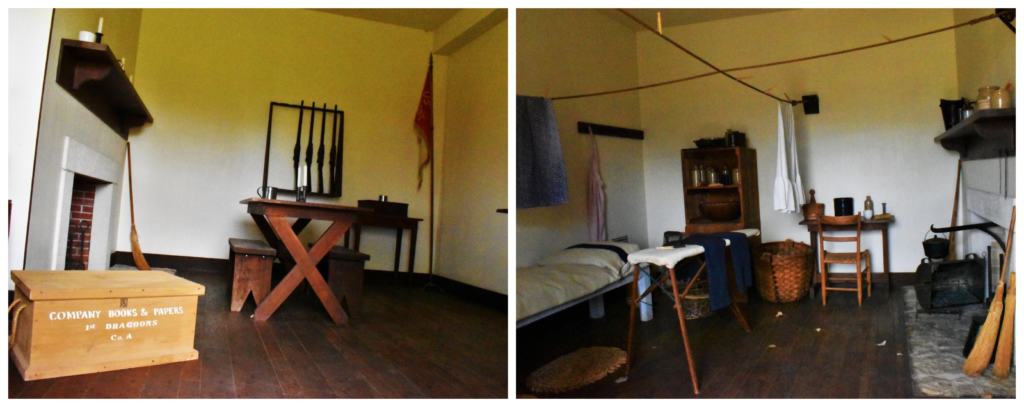
Humble Quarters
Keeping the peace made for a hard life on the plains. The living quarters were modest, with most soldiers afforded a single room. Isolated from civilization, social contact was limited to other enlisted men, and occasional passing missionaries or traders. The day started at daybreak and was filled with duties until sundown. While the rigors of construction were especially difficult, once the fort was completed life went into maintenance mode. Those in the mounted squads would spend part of their day on stable call, which included cleaning, feeding, and watering the mounts.

Officer Perks
While life for enlisted soldiers was mundane, officers had more opportunities to travel and interact with others. Many officers were married and had their wives and families living at the fort. Being an Army wife meant adapting to the harsh environment and forgoing many of the luxuries they were used to back east. Life was certainly different, but being with their husbands was deemed far more important than the amenities that they had to give up. Most Army wives would attempt to recreate a portion of this gentler lifestyle in the space that was afforded them on base.
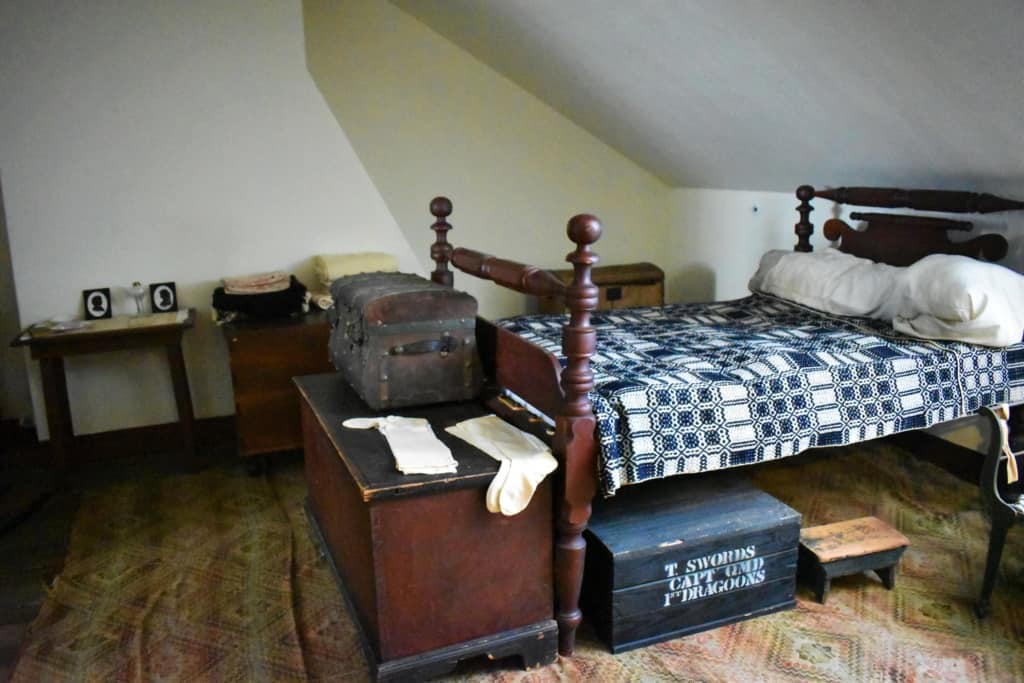
No Guarantees
Wives were not recognized by the Army Regulations, so they were not afforded any protection after the loss of an officer. Usually, if an officer was killed in duty, the wife and children would return to their original homes back east. They still played an important role by recording daily life in their journals and diaries. From these records, historians are able to piece together a better picture of life in a frontier fort, prior to the Civil War.
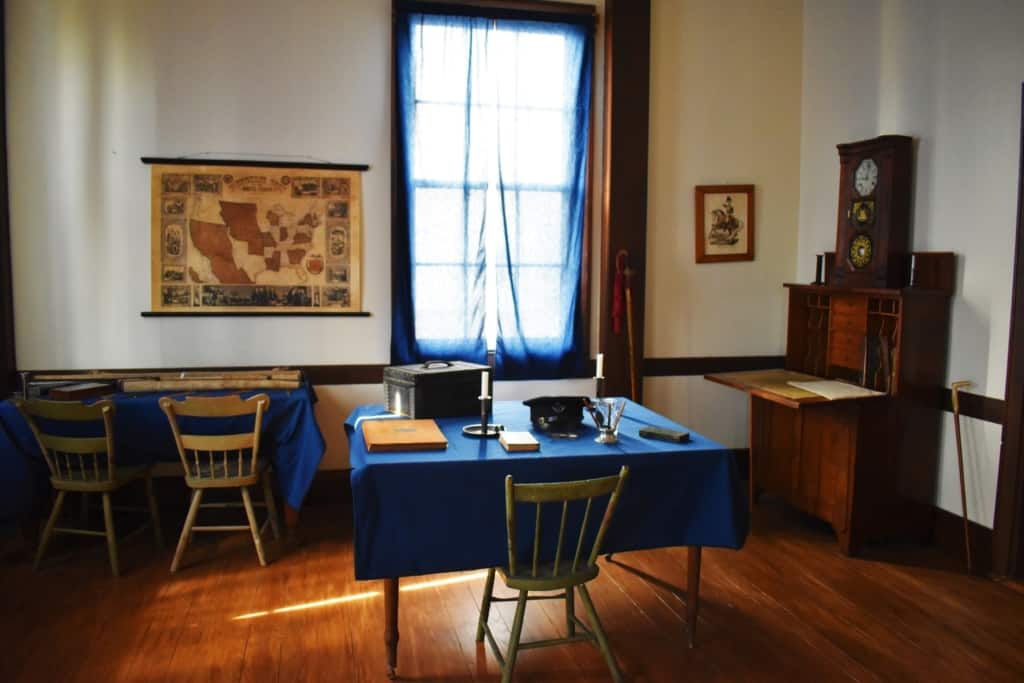
Court Martial
One of the duties of Army officers, at a frontier fort, was to oversee any court martial. Disciplinary actions could cover a wide range of offenses and result in harsh punishment. Keeping the peace involved curtailing actions like gambling, drunkenness, fighting, and desertion. Often charges of insubordination would stem from failure to salute or using disrespectful language. These issues seemed to increase after payday, as the sudden influx of money was often spent on liquor. A standard court martial involved a three to eleven member panel. This process was reserved for enlisted soldiers, as officers were only subject to the fort’s Commanding Officer.
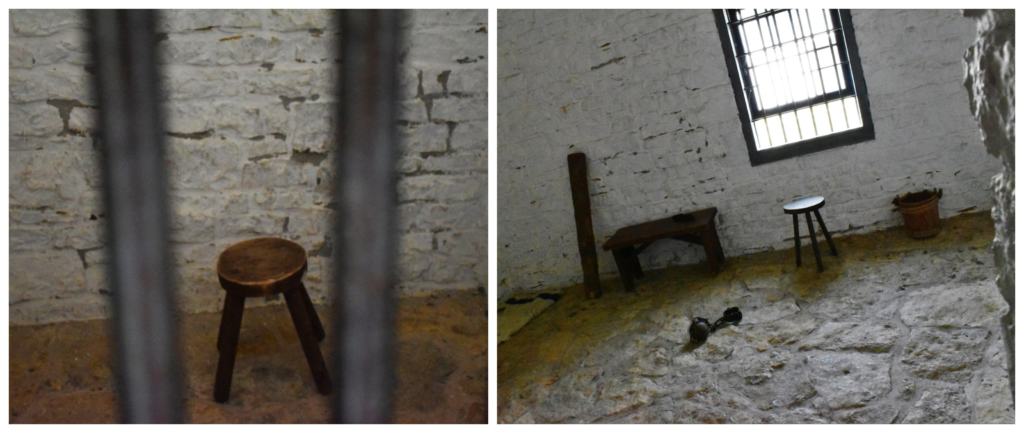
Punishment
Once a soldier was convicted of a crime, punishment came swift and was often cruel. Enlisted men were commonly mistreated by officers. Non-physical punishments included the loss of rank, pay reduction or confinement in the guardhouse. Sometimes the repercussions of soldiers indiscretions would turn to physical punishment. The guilty may be required to stand on a barrel with a sign stating their crime. A common punishment of “the wooden mule” required the soldier to sit for long periods on rail strung across a raised scaffold. Deserters would be subject to more severe punishment, if caught. Some would be branded or drummed out of the service. At Fort Scott it was more common for a deserter to be sentenced to hard labor or imprisonment in the guardhouse.
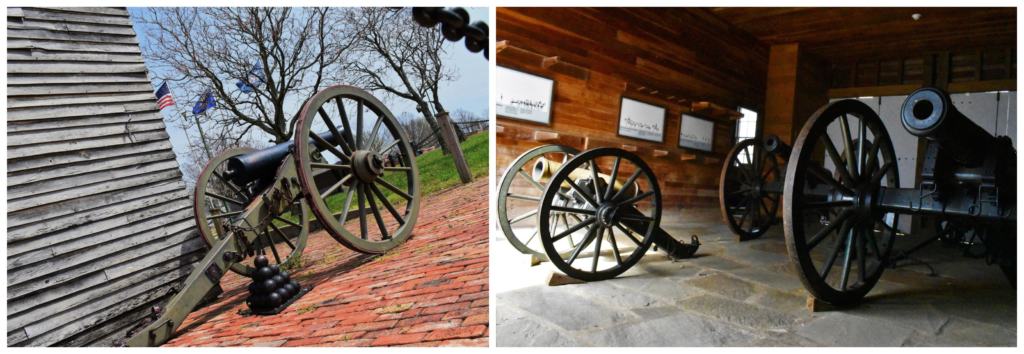
Fire Power
Fort Scott held a prominent position on a bluff, which afforded them a view of settlers arriving from the east. While the Indian lands were to remain free of settlers, many easterners would require passage along the Oregon and California Trails. Keeping the peace meant that the dragoons not only rode as escorts for the settler wagon trains, they would also parley with the tribes in an effort to minimize conflicts. The Mexican-American War (1846-1848) required the use of the dragoons and infantry who were stationed at Fort Scott. The United States was growing quickly, and soon the frontier border had shifted farther west. Fort Scott became temporarily obsolete and abandoned by the army in 1853. In 1855, a government auction saw the sale of the buildings to local settlers, and by 1857 the town of Fort Scott began to take shape.
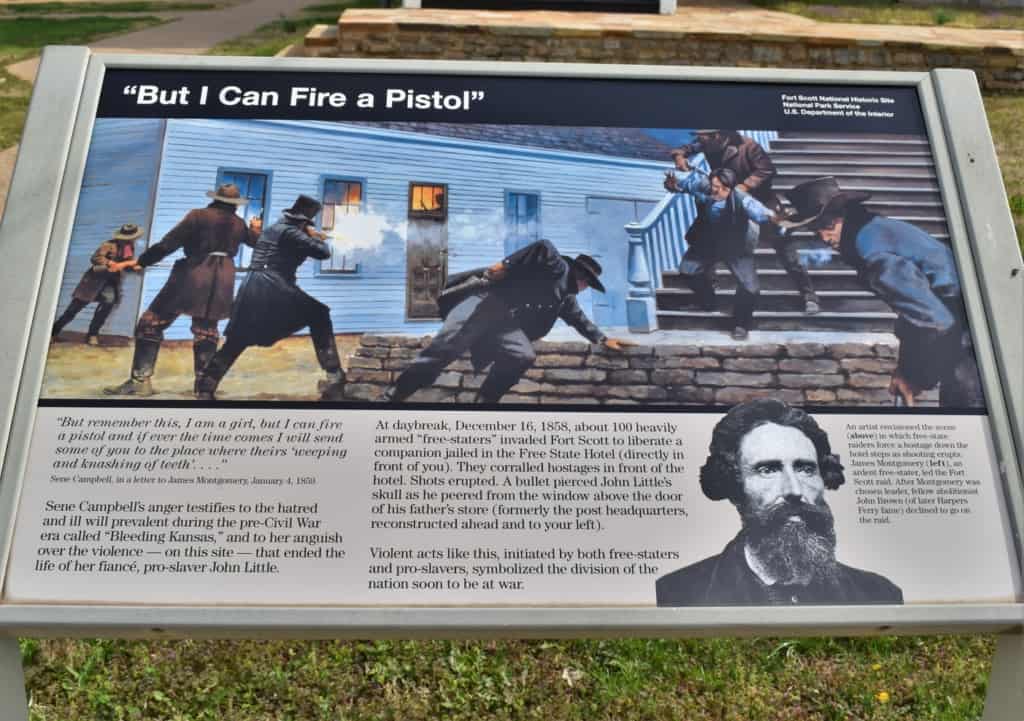
Civil War Comes to Fort Scott
While the Army had relinquished use of Fort Scott in 1855, the rising tensions leading to the Civil War would cause them to return. In 1861, Union Army forces occupied some of the buildings that were originally constructed for use at the fort. Soon, new warehouses, wells, powder magazines, and a military prison were under construction. Fort Scott would become the strongest Union site south of Fort Leavenworth. The fort would house a regular compliment of soldiers, but the ranks would often swell from other regiments temporary occupation. Many of these were mustering, before heading off to campaigns in Missouri or Arkansas. Being the storehouse for supplies, for the surrounding region, meant that Fort Scott was the target of guerrilla warfare. Keeping the peace during the “war between the states” was a costly activity.
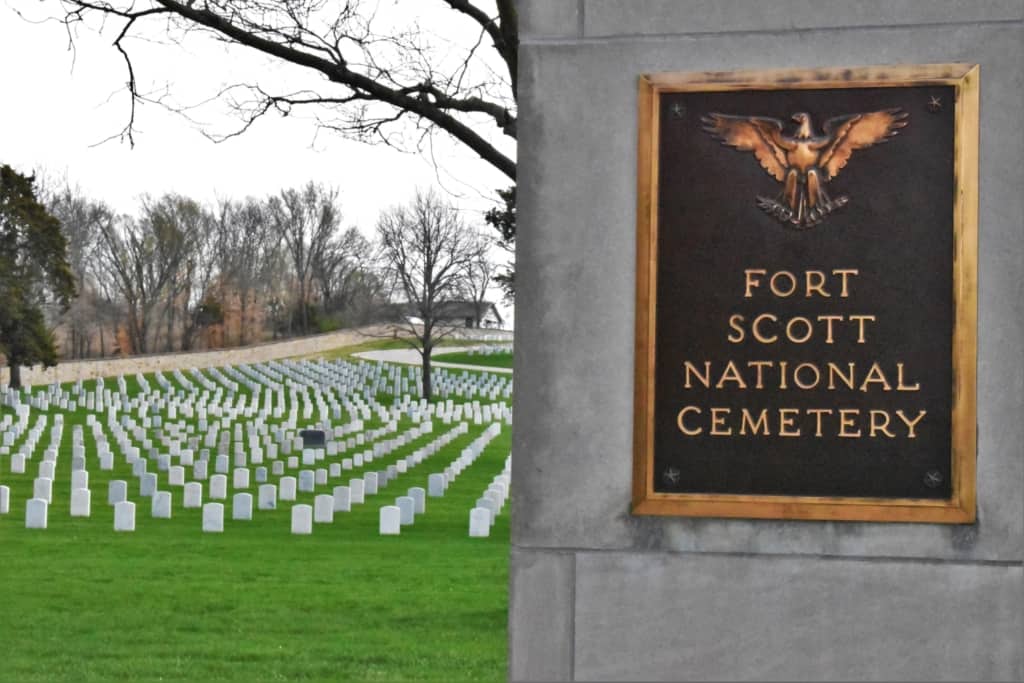
National Cemetery #1
During the early years of the fort, a small cemetery was maintained close to the grounds. By 1861, a newly purchased area became the local cemetery. Victims of the Civil war swelled the number of interred soldiers and created the need to expand. In the fall of 1862, the land was renamed the Fort Scott National Cemetery. When Abraham Lincoln created the original twelve national cemeteries, Fort Scott had the designation of being U.S. National Cemetery #1. During our visit to Fort Scott, we took a small side trip to visit the cemetery.
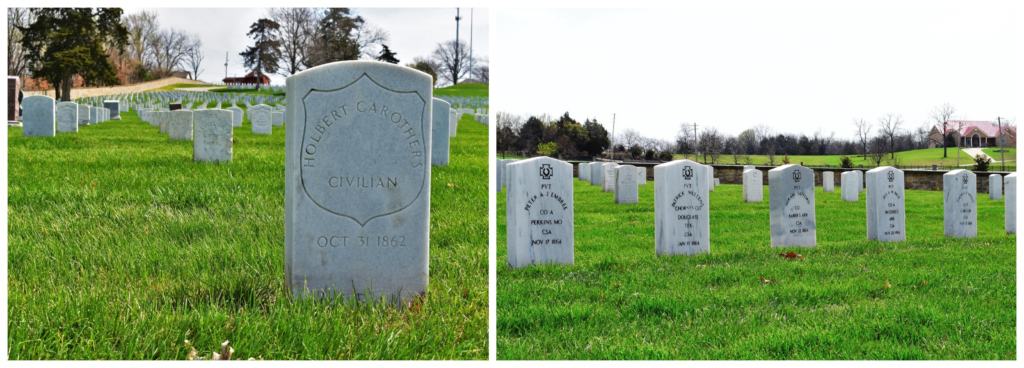
Rest in Peace
Walking through the grounds is almost like passing backwards in history. The markers bear the names of those who gave their lives in service to their country. We saw names from current days leading back to before the Civil War. Closer investigation turned up some unique markers. To see the name of a civilian, who was killed during the Civil War, was quite unexpected. In another section of the cemetery is a row of headstones that sit at an angle from the other rows. These are Confederate soldiers who died during a nearby skirmish. Our time at the national cemetery was limited, but a history buff could easily spend a day here looking for names to research.

Plan Your Visit
It never fails to surprise us just how fast a day of exploring passes. Our morning seemed so far away, yet the time felt like it zipped by. When I began looking back at the photos I had captured, I realized that there is no way to fully represent all of the information we had picked up at the fort. The best way for you to gain a more complete understanding would be a visit in person. Since admission to Fort Scott is free, it makes for a great destination to take a family day-trip. With lots of buildings and spaces to explore, you will see for yourself that keeping the peace on the edge of the frontier was an exhausting task. How many of you have had the opportunity to visit the Fort Scott National Historic Site?


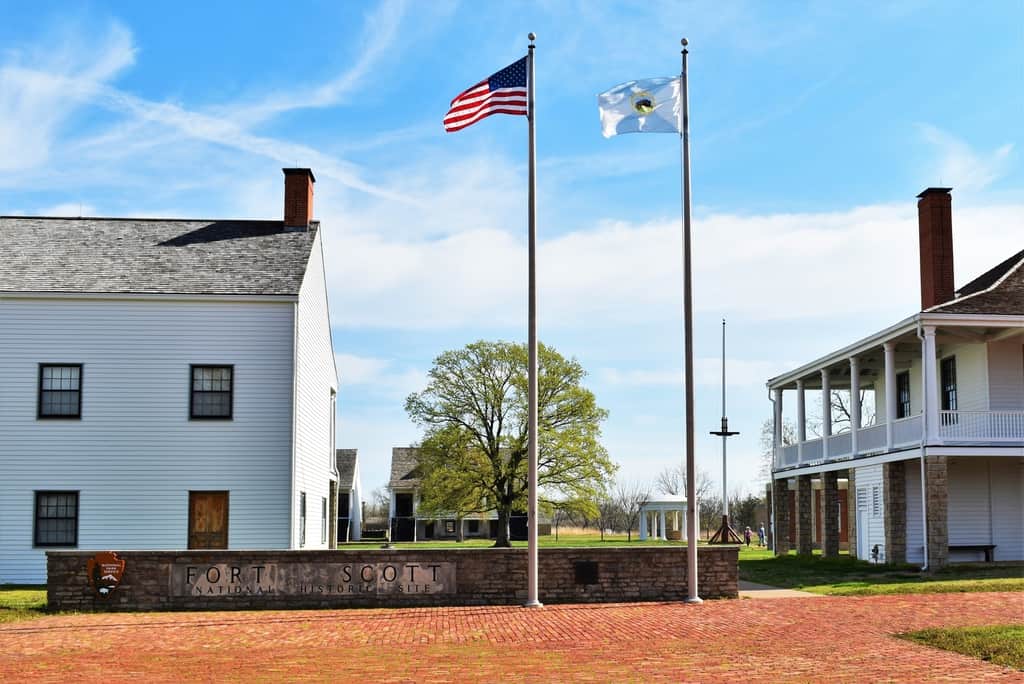
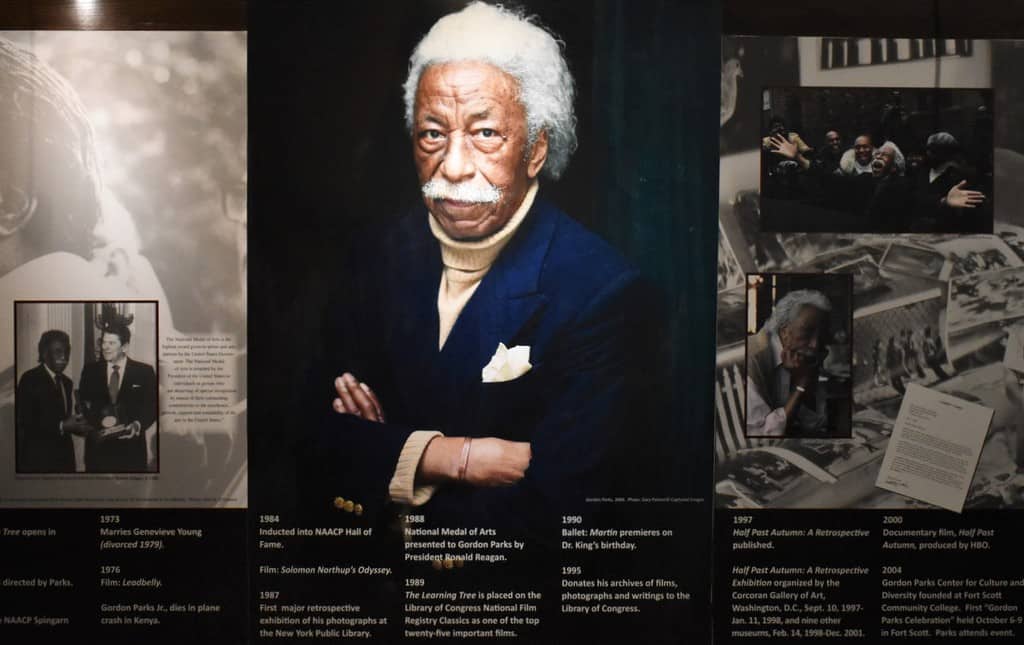
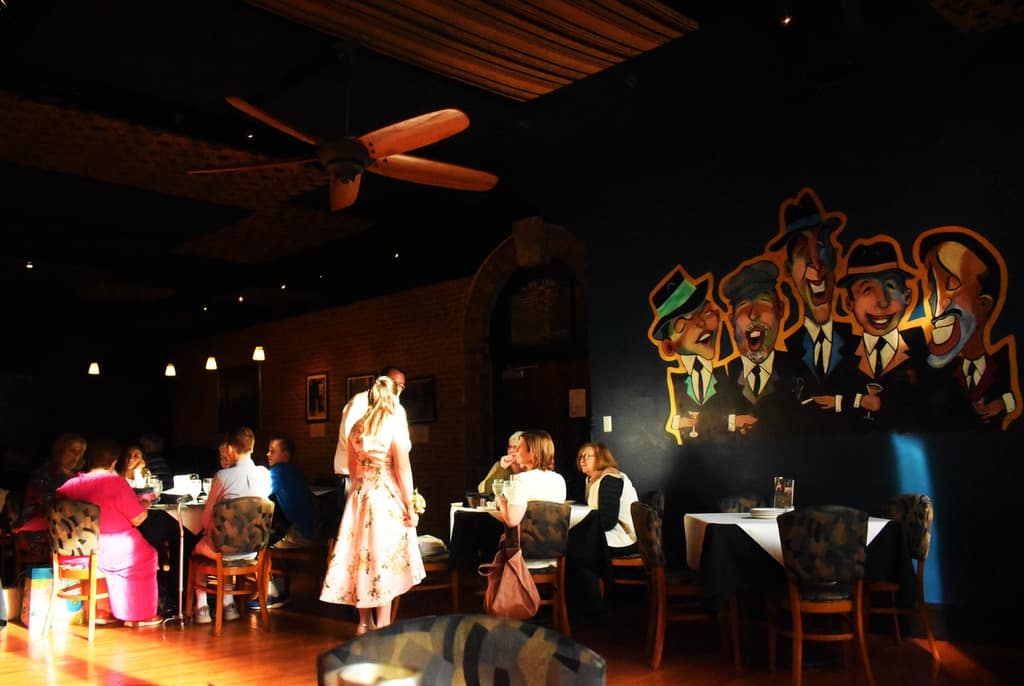
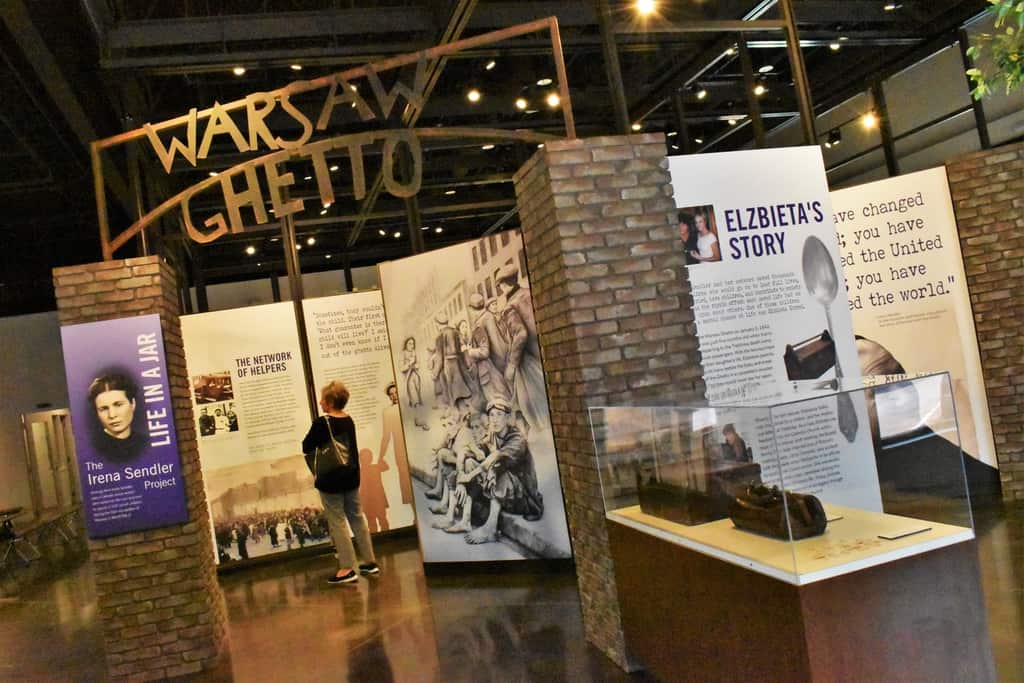
Hi Crystal and Jeff, I am enjoying your travel articles. Being an arm-chair traveler is almost as fun as the real thing. I hadn’t been on face book for a long time,but decided to go back when our grandson and wife had a premature baby at 26 weeks. They were posting pictures and updates on his condition and we wanted to see all of that. So anyway Frieda never told me about your travels , so I’m glad I found them myself. Keep up the posts and happy travels. We just moved to Albert Lea last Nov. so Gary and I are doing a little traveling in Iowa to places we hadn’t been before. Just a one day out sort of thing for now, but fun and interesting.
So glad that you found us. We love the day trips, as well. You get to explore, but still home for the comforts of your own bed. Safe travels.
How interesting! It seems to me that the enlisted men’s quarters are nicer than I expected. But I do feel sorry for the officer’s wives – not only did they live in fairly rudimentary homes, but it must have been so isolating! Thanks for the introduction to this outpost on the frontier.
Glad you enjoyed our peek into life on the frontier. It’s a stark reminder of how far we have come with amenities.
Interesting! I’ve been wanting to revisit Ft. Scott and your pictures inspire me to plan it soon!!
Glad to hear that. It’s such a historic place to explore. Be sure to check out our other Fort Scott articles for more ideas.